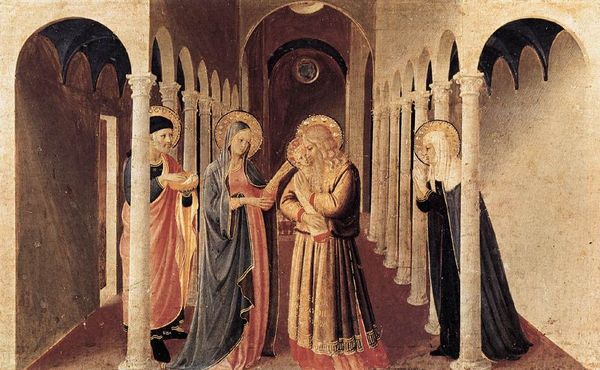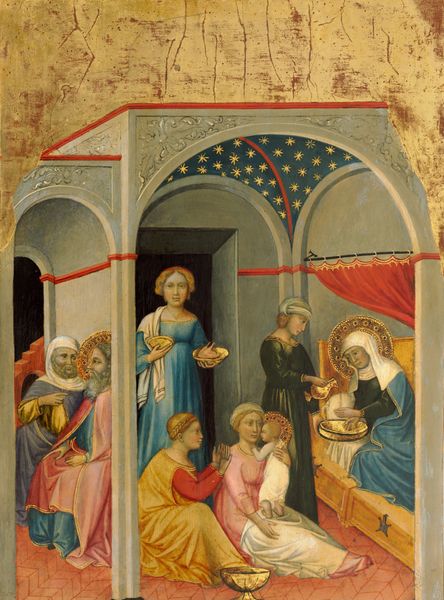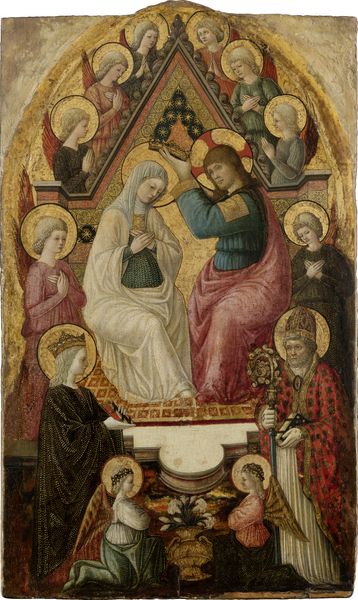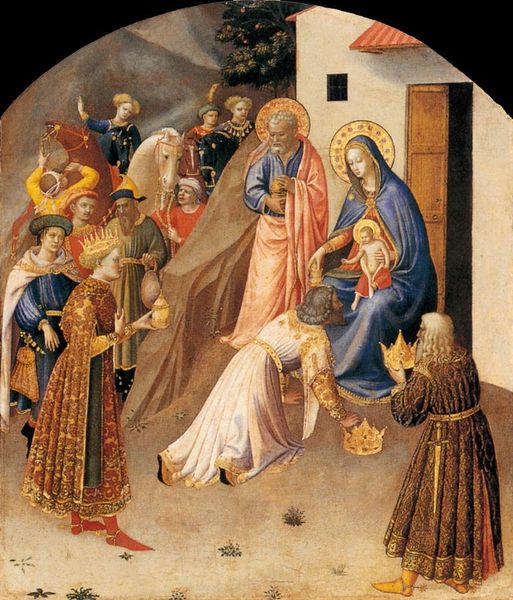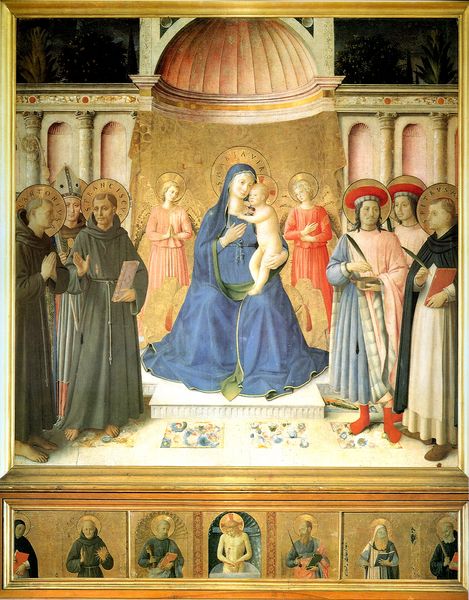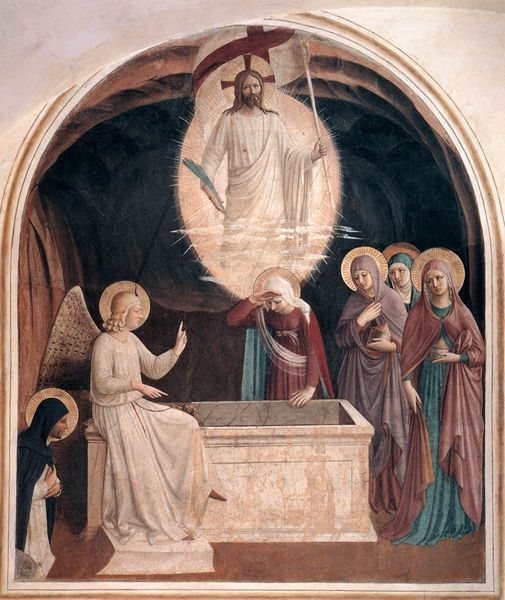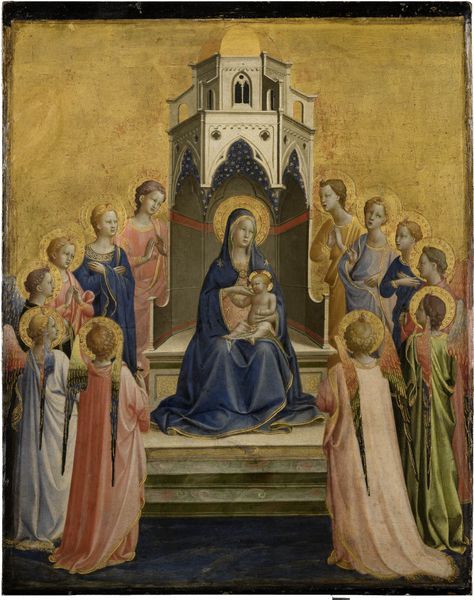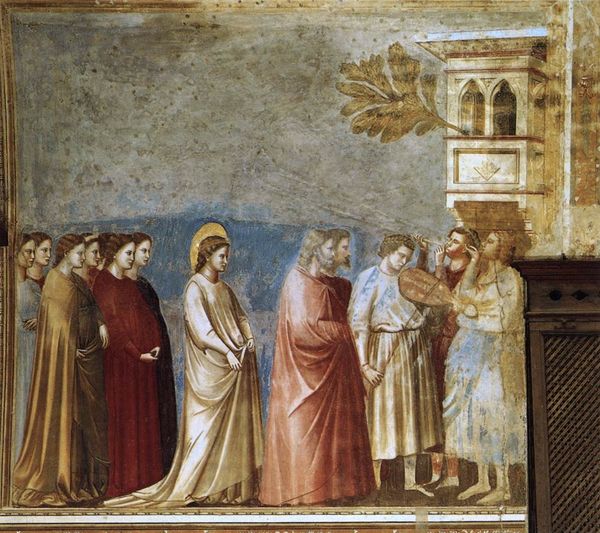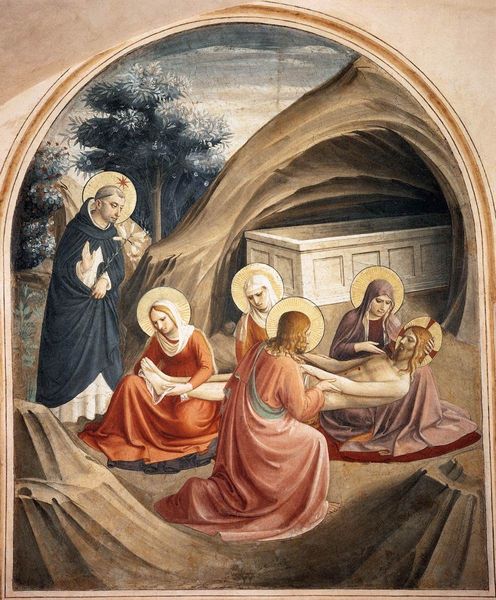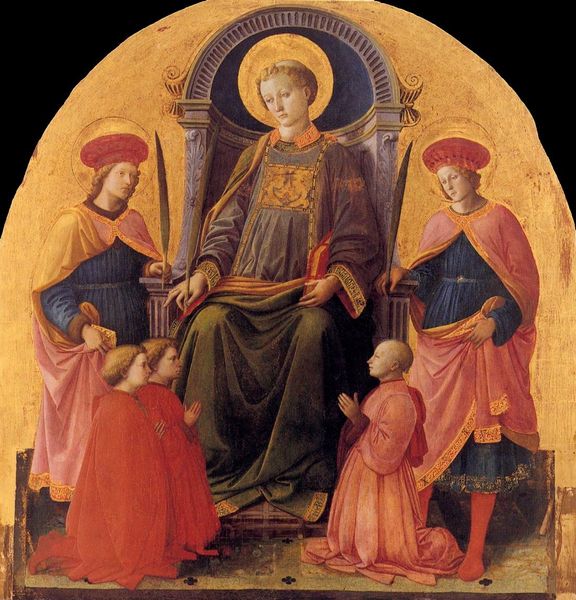
fresco
#
portrait
#
byzantine-art
#
narrative-art
#
figuration
#
fresco
#
child
#
christianity
#
history-painting
#
italian-renaissance
#
early-renaissance
#
virgin-mary
#
christ
Copyright: Public domain
Editor: Here we have Fra Angelico’s fresco, "Presentation of Jesus in the Temple," painted around 1442. The figures are so serene, and there's such a sense of order, of ritual, in their arrangement. How do you see the cultural significance of this particular representation, its role within the Basilica and Florentine society at the time? Curator: The placement within the Basilica di San Marco is key. Fra Angelico was a Dominican friar himself, so this work wasn't just decorative. It was didactic, meant to reinforce specific religious tenets to a particular monastic community within a specific physical space. Notice how the carefully constructed space and the halos create a stage for this event. It’s designed to elicit a devotional response. Consider the politics of imagery - it was part of the humanist movement's drive to connect with early Christian history, adding visual weight to religious claims. Editor: The use of fresco really does contribute to that feeling. It’s literally *part* of the wall, integral to the space. How did the patronage of the church and wealthy families influence its form and content? Curator: Absolutely. Fresco becomes not just a medium, but a statement, linking wealth, piety, and artistic vision. Cosimo de' Medici, for instance, practically bankrolled the reconstruction and decoration of San Marco. The Medicis sought legitimacy and sought to showcase their power. This fresco is very much a part of the Medici's broader efforts to shape Florence's cultural identity and solidify their influence. So what is more "art" than religion or money in this scene? Editor: That definitely clarifies the relationship between art and power during the Early Renaissance. Curator: Indeed, it is an overt connection with wealth, belief, and community at a transformative moment in Florence. This painting teaches that lesson, beyond its scriptural function.
Comments
No comments
Be the first to comment and join the conversation on the ultimate creative platform.
